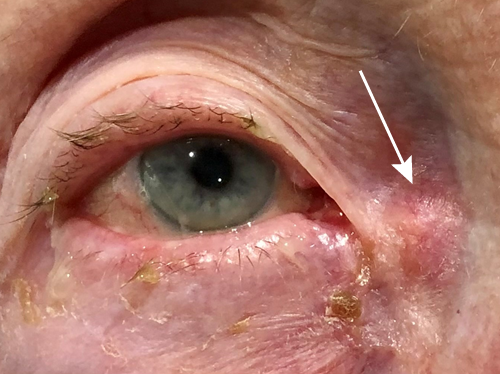Assessment of dacryocystitis
Dacryocystitis is an infection of the lacrimal sac, usually associated with obstruction of the nasolacrimal duct (see Diagram of the eye). It can be acute or chronic. Dacryocystitis is rare in children and should prompt immediate referral for expert advice and management; it can progress to orbital cellulitis, brain abscess, meningitis or sepsisThe Royal Victorian Eye and Ear Hospital (RVEEH), 2023.
Acute dacryocystitis (see Acute dacryocystitis) is characterised by acute onset of pain, mucous discharge, redness and swelling surrounding the nasolacrimal duct. Common pathogens include Staphylococcus aureus, streptococci (including Streptococcus pyogenes [group A streptococcus (GAS)], Streptococcus pneumoniae, and Streptococcus anginosus [milleri] group), Haemophilus influenzae, Actinomyces species, gram-negative bacteria (including rarely Pseudomonas aeruginosa) and, in patients with immune compromise, fungiThe Royal Victorian Eye and Ear Hospital (RVEEH), 2023. Treatment of acute dacryocystitis is with antibiotic therapy. Acute dacryocystitis may be associated with periorbital (preseptal) cellulitis and may be complicated by orbital cellulitis; these are important differential diagnoses to consider.

Right-sided acute dacryocystitis, showing swelling in the right medial canthus up to the medial canthal tendon, some redness, some crusting and discharge.
Photo sourced with permission from Dr Kenny Chan.
Chronic dacryocystitis is characterised by recurring episodes of epiphora or mucopurulent discharge, which may be associated with a nontender mass (or a mucocele). Pressure over the lacrimal sac may express mucopurulent material from the punctum. Management of chronic dacryocystitis is usually surgical; do not use antibiotic therapy unless acute dacryocystitis is superimposed; see Treatment of acute dacryocystitis.
